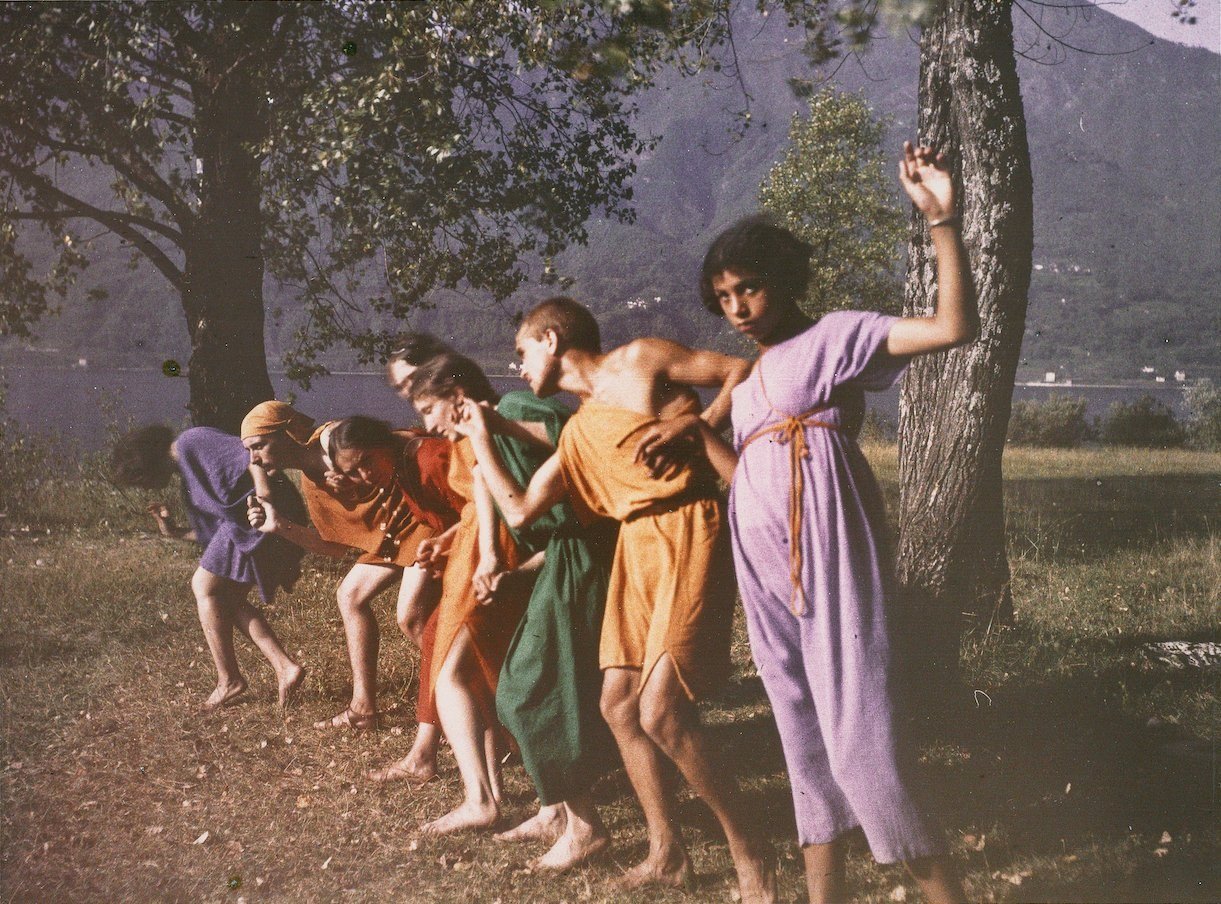When Life is Silent
Rudolf Laban and dancers in Ascona circa 1915
When Life is Silent is an experimental dance feature film that explores early European modern dance.
Set in Ticino, the film traces locations that once brought together influential figures such as dancer artists Mary Wigman, Rudolf Laban, Suzanne Perrottet, alongside poet and novelist Hermann Hesse. These individuals converged at sites including, in particular, the iconic Monte Verità in Ascona, creating a unique cultural crossroads that laid the groundwork for avant-garde movements intertwining philosophy, psychology, and the arts.
Embracing practices such as dance, vegetarianism, and living in harmony with nature, these communities reflected pacifist and libertarian ideals as they sought to respond to the challenges of industrialisation, urbanisation, and deepening social divides.
When Life is Silent illuminates the biographies of early European modern dance pioneers and celebrates the enduring significance of artists and their communities. The work reflects on this history through today’s lens, exploring how the political and social struggles of their time continue to manifest in new forms.
Team:
Writer, Director, Producer: Áine Stapleton
Performers: Meggie Blankschy, Grace Cuny, Magdalena Górnikiewicz, Lucia Gugleri, Pierre Piton, Mufutau Yussuf
Choreography: Scored by Áine Stapleton. Adapted and Formed in Collaboration with the Performers
Director of Photograhy: Will Humphris
Costume Design: Karin Jud
Production Assistant for Filming: Nathalie Jelmini
Funded by: The Arts Council of Ireland Dance Project Award and Wicklow County Arts Office Strategic Project Awards 2024.
Facilitation Support: Tanzhaus Zürich, Ticino Film Commission, and Mermaid Arts Centre Ireland.
Initial Development: Kindly supported by an Artist Residency with Monte Verità Foundation.

